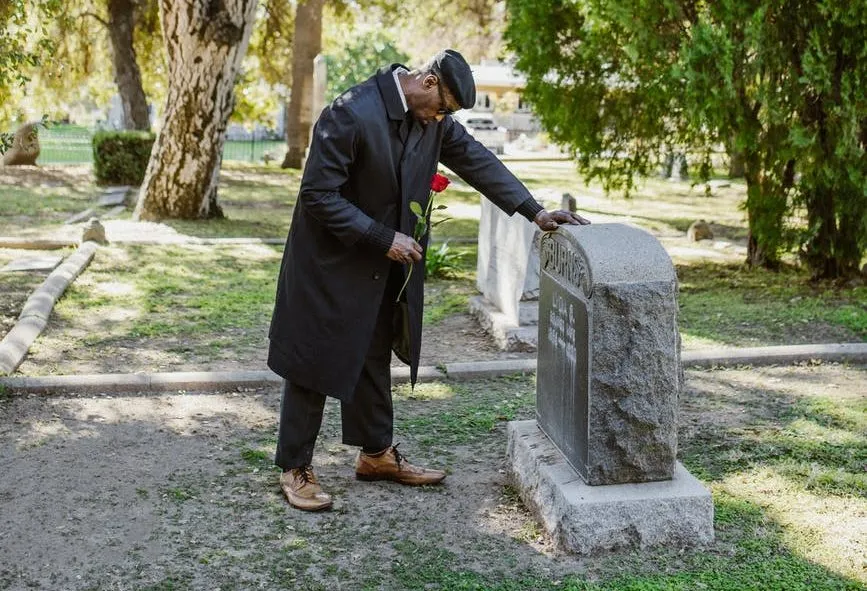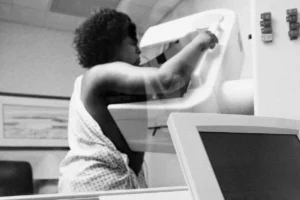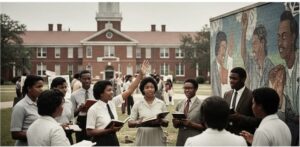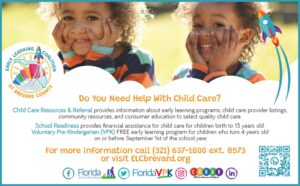A million empty spaces: Chronicling COVID’s cruel US toll

by ADAM GELLER, CARLA K. JOHNSON and HEATHER HOLLINGSWORTH Associated Press
On the deadliest day of a horrific week in April 2020, COVID took the lives of 816 people in New York City alone. Lost in the blizzard of pandemic data that’s been swirling ever since is the fact that 43-year-old Fernando Morales was one of them.
Two years and nearly 1 million deaths later, his brother, Adam Almonte, fingers the bass guitar Morales left behind and visualizes him playing tunes, a treasured blue bucket hat pulled low over his eyes. Walking through a park overlooking the Hudson River, he recalls long-ago days tossing a baseball with Morales and sharing tuna sandwiches. He replays old messages just to hear Morales’ voice.
“When he passed away it was like I lost a brother, a parent and a friend all at the same time,” says Almonte, 16 years younger than Morales, who shared his love of books, video games and wrestling, and worked for the city processing teachers’ pensions. “I used to call him just any time I was going through something difficult and I needed reassurance, knowing he would be there… That’s an irreplaceable type of love.”
If losing one person leaves such a lasting void, consider all that’s been lost with the deaths of 1 million.
Soon, likely in the next few weeks, the U.S. toll from the coronavirus will surpass that once unthinkable milestone. Yet after a two-year drumbeat of deaths, even 1 million can feel abstract.
“We’re dealing with numbers that humans are just not able to comprehend,” says Sara Cordes, a professor of psychology at Boston College who studies the way people perceive quantity. “I can’t comprehend the lives of 1 million at one time and I think this is sort of self-preservation, to only think about the few that you have heard about.”
It goes far beyond faces and names.
COVID-19 has left an estimated 194,000 children in the U.S. without one or both of their parents. It has deprived communities of leaders, teachers and caregivers. It has robbed us of expertise and persistence, humor and devotion.
Through wave after wave, the virus has compiled a merciless chronology of loss — one by one by one.
It began even before the threat had really come into focus. In February 2020, an unfamiliar respiratory illness started spreading through a nursing home outside Seattle, the Life Care Center of Kirkland.
Neil Lawyer, 84, was a short-term patient there, recovering after hospitalization for an infection. On the last Wednesday of the month he joined other residents for a belated Mardi Gras party. But the songs that filled the entertainment room were interrupted by frequent coughing. Before week’s end, the facility was in lockdown. Days later Lawyer, too, fell ill.
“By the time he got to the hospital they allowed us to put on these space suits and go in and see him,” son David Lawyer says. “It was pretty surreal.”
When the elder Lawyer died of complications from COVID-19 on March 8, the U.S. toll stood at 30. Eventually 39 Life Care residents and seven others linked to the facility perished in the outbreak.
By any account, Lawyer known to his family as “Moose” lived a very full life. Born on a Mississippi farm to parents whose mixed-race heritage subjected them to bitter discrimination, he became the first in his family to graduate from college.
Trained as a chemist, he took an assignment in Belgium with a U.S. company and stayed for more than two decades. Fellow expats knew him for his devotion to coaching baseball and for the rich baritone he brought to community theater and vocal ensembles.
“He had the most velvet-like voice,” says Marilyn Harper, who harmonized with Lawyer many times. “He loved to perform, but not in a showy way. He just got such great pleasure.”
After Lawyer and his wife retired to Bellevue, Washington to be near two of their children, he embraced his role as grandfather of 17.
When his energy for performing diminished, he visited clubs to hear his grandson play guitar. At weddings, he joined his sons, grandson and nephew to serenade brides and grooms in a makeshift ensemble dubbed the Moose-Tones.
Last October, when one of his granddaughters married, it marked the first family affair without Lawyer there to hold court. The Moose-Tones went on without him.
“He would have just been beaming because, you know, it was the most important thing in the world to him late in life, to get together with family,” David Lawyer says.
By the end of March 2020, deaths in the U.S. topped 3,500 and the federal government’s lead expert on infectious diseases, Dr. Anthony Fauci, predicted COVID would eventually take more than 100,000 lives.
Still, the idea that the toll could reach 1 million was “almost certainly off the chart,” he said at the time. “Not impossible, but very, very unlikely.”
Then deaths in the Northeast began to soar. President Donald Trump dropped talk of reopening the nation by Easter. In April, the U.S. surpassed Italy as the country with the most COVID deaths.
At first the virus appeared to bypass Mary Jacq McCulloch, who tested negative after others in her Chapel Hill, North Carolina nursing home were quarantined.
McCulloch, once a teacher in Tennessee, had long been the spark plug of her family, prone to dancing in supermarket aisles and striking up conversations with complete strangers.
When the 87-year-old became sick late that month, her children, all grown, gathered at her bedside and by phone.
The eldest, Julie McCulloch-Brown, recounted childhood nights falling asleep to the sound of her mother’s bridge parties, “everybody laughing and a sense of being safe, that all was right with the world.” The youngest, Drew, thanked his mother for the energy she gave to raising them, sometimes working multiple jobs to pay the bills.
McCulloch died the next afternoon, April 21, 2020. By day’s end, the U.S. toll had eclipsed 47,000.
Her death came at the height of a North Carolina spring. Now, with the season here again, daughter Karen McCulloch is reminded of their drives together to gaze at the trees in blossom. Mary Jacq’s favorite were the redbuds.
“They are stunning magenta,” Karen says. “I can’t see one in bloom without thinking, ‘Mom would love this.’ Kind of like her – brightly colored and demanding attention.”
By late spring of 2020 the pandemic seemed to be loosening its grip. That is until governors moved to reopen their states and deaths spiraled again, especially in the south and southwest.
Luis Alfonso Bay Montgomery had worked straight through the pandemic’s early months, piloting a tractor through the lettuce and cauliflower fields near Yuma, Arizona. Even after he began feeling sick in mid-June, he insisted on laboring on, says Yolanda Bay, his wife of 42 years.
By the time Montgomery, 59, was rushed to a hospital two weeks later, he required intubation, his body racked by the virus and a heart attack.
He died on July 18, a day that saw the U.S. toll surpass 140,000. And for the first time since they’d met as teenagers in their native Mexico, Bay was on her own.
The couple had endured hard times together, including the loss of their first child to chickenpox and Luis’ deportation after they crossed into Arizona. But they had returned, finding work, saving to buy a home in San Luis, Arizona, and raising three children.
In the months since her husband died, Bay, a taxi driver, has worked hard to keep her mind occupied. But memories find a way in.
Some evenings she imagines Luis Alfonso sitting on “his” living room couch, boots and backpack on the floor, asking the kids about their day at school.
Others, “he’s in the bedroom, watching me,” she says, in Spanish. Driving past the fields he plowed, she imagines him on his tractor.
“It’s time to get rid of his clothes, but …,” she says, unable to finish the sentence. “There are times that I feel completely alone. And I still can’t believe it.”
On December 14, 2020, cameras jockeyed for position as the nation’s first COVID vaccine was administered to a New York nurse, in time for the morning news shows.
“I feel like healing is coming,” she said. But the vaccines had arrived too late to save a fellow caregiver, Jennifer McClung.
At Helen Keller Hospital in Sheffield, Alabama, staffers knew McClung, a longtime dialysis nurse, as “Mama Jen.” When new nurses started, she took them under her wing. When staffers on other floors had questions, they called her for advice. Some nights, she woke up crying with worry about her patients, her family says.
In November, McClung, 54, and her husband, John, also a hospital worker, both tested positive.
“Mama, I feel like I’m never coming home again,” McClung texted her mother, Stella Olive, from a hospital bed. Her lungs severely damaged by the virus, she died just hours before the nation’s vaccination campaign began. Later that day, the U.S. toll passed 300,000.
At a memorial service, McClung’s body lay dressed in nursing scrubs at her family’s request. The following day, heading home after getting her first shot, nurse Christa House became so upset she had to pull over.
If only the vaccine had come in time for her friend and colleague “she might have made it,” House told herself.
Today, a decal with a halo and angel’s wings marks the place McClung once occupied at a third-floor nurses’ station. In Olive’s kitchen, a digital picture frame displays a steady stream of pictures and videos of the daughter she lost.
“I can hear her laugh. I can hear her voice,” McClung’s mother says. “I just can’t touch her. It is the hardest thing in the world.”
By early last summer, lines at vaccine sites had dwindled and daily COVID deaths had declined by tenfold. Then the virus reinvented itself.
In southwest Missouri, where immunization rates had stalled at around 20 percent in some counties, hospitals were swamped by a surge among unvaccinated residents, people like Larry Quackenbush.
Quackenbush, 60, was the glue that held his family together. After wife Cathie suffered brain damage in a car accident more than 20 years ago, he became the primary cook, carpooler and caregiver, while working as a video producer for the Assemblies of God denomination in Springfield.
When his 12-year-old son, Landon, came home from summer camp sick with COVID, Quackenbush stepped up again.
Like many in the area, the family wasn’t vaccinated. The shot made Cathie nervous. Mindful of her husband’s heart problems and Parkinson’s disease, though, she gave Larry permission to get it. He never did.
“Even when he started feeling sick, he kept taking care of everybody,” daughter Macy Sweeters says.
In July, first Larry, then Cathie were rushed to the hospital. She was able to return home a day later, but her husband remained, tethered to a ventilator.
He died on August 3, as the U.S. toll topped 614,000. In the days that followed, Sweeters and her husband moved back to Springfield from Texas to help care for her brother.
Quackenbush’s own brother, Randal, who leads a church in Boston, still despairs over the vaccine skepticism. Mostly, though, he mourns the loss of a man so selfless he once gave a college classmate the shirt off his back.
“That was just kind of Larry’s heart,” Randal says. “He was all about helping other people.”
Even when the delta wave ebbed, the toll continued to rise.
Last August, Sherman Peebles, a sheriff’s deputy in Columbus, Georgia, went away for a week of leadership training. On the way home, he was laboring so hard to breathe he drove straight to the emergency room.
The 49-year-old Peebles was widely known in Columbus as Uncle Sherman, devoted to community, church and family.
After nearly two decades on patrol and working in the county jail, he was a fixture in the courthouse, where he was the sergeant in charge. Every Saturday, he manned a barber chair at best friend Gerald Riley’s shop, dispensing small talk along with haircuts, and admonishing young customers to stay out of trouble.
At home, he doted on wife, ShiVanda, his sweetheart since high school. The couple ran a business together, renting bouncy houses and popcorn carts for parties. But their partnership was much more. After ShiVanda had a kidney transplant, he turned their trips to Atlanta for continued care into mini-vacations, taking her to Braves games and out for dinner.
“He called me his queen,” she says.
In late September, as Peebles lay in the hospital, the U.S. toll topped 675,000, surpassing the number of Americans killed by the Spanish flu pandemic a century ago.
He died the following day. To make room for an estimated 300 mourners, including the mayor and police chief, the funeral service was held in a local skating rink.
Months later, Riley still arrives at the barber shop each Saturday expecting to see Peebles’ truck parked outside. At day’s end, he thinks back to the routine he and his friend of more than 20 years always followed when closing.
“I love you, brother,” they’d tell one another.
How could Riley have known those would be the last words they’d ever share?
The doctors and nurses were fighting for their lives.
And so, at 7 p.m. every evening through the spring of 2020, Larry Mass and Arnie Kantrowitz threw open the windows to thank them, joining New York’s symphony of pan banging, air horns and raucous cheers.
Mass, a psychiatrist, felt reassured by the city’s energy. But he worried about his partner, whose immune system was weakened by anti-rejection drugs required after a kidney transplant. For months, Kantrowitz, a retired professor and noted gay rights activist, took refuge on their couch, watching favorite Bette Davis movies with Mass by his side.
Kantrowitz, cinnamon-bearded as a young man, had long identified with the iconic red-headed actress. “Getting old ain’t for sissies,” she’s widely credited with saying. Even as Kantrowitz grew older and frailer, he held on to his admiration for her spunk.
It helped sustain the 81-year-old through most of last year. But that and a booster shot were not enough when the omicron variant swept the city in December.
Arnie Kantrowitz died of complications from COVID on January 21, as the toll moved nearer to 1 million.
Kantrowitz’s personal papers, now in the collection of the New York Public Library, preserve a record of his decades of activism. But the 40 years he shared with Mass can only live in memory.
On days when news headlines leave Mass feeling angry about the world, he reaches out to his missing partner. What would Kantrowitz say if he were here? Words of calm and conscience were always one of his special gifts.
“He’s still with me,” Mass says. “He’s there in my heart.”








